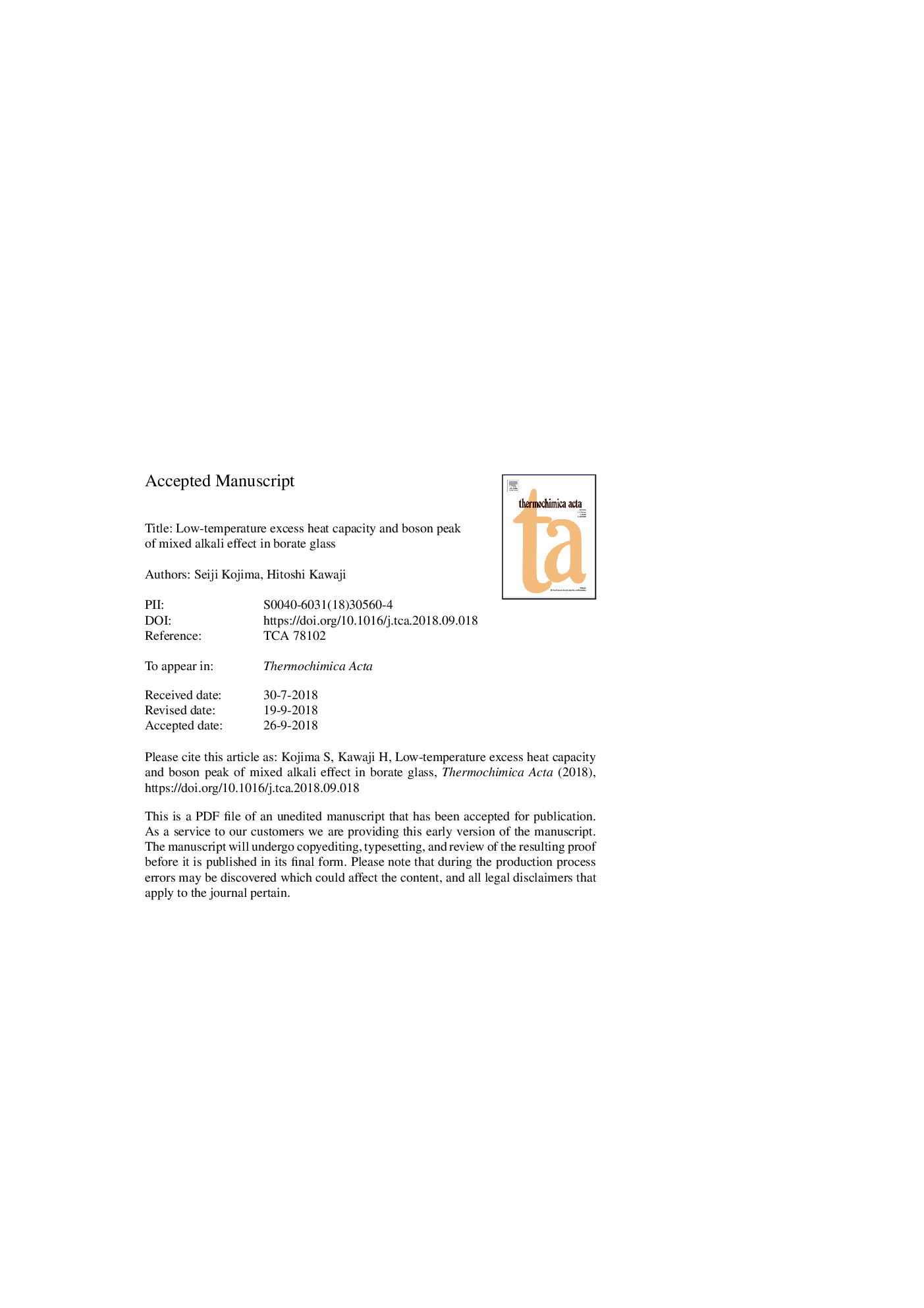| Article ID | Journal | Published Year | Pages | File Type |
|---|---|---|---|---|
| 11027939 | Thermochimica Acta | 2018 | 13 Pages |
Abstract
When two dissimilar kinds of alkaline ions are used to co-doping oxide glass, a maximum in the electric resistivity or the expansion coefficient appears, that is called the mixed alkali effect. The heat capacity Cp of several rapidly-quenched mixed alkali borate glass was measured using a relaxation calorimeter to investigate the mixed alkali effect. A broad peak of Cp/T3 was observed with the maximum Tmax in the range 5-15âK, which is related to the excess vibrational density of states (VDoS) of a non-Debye nature. Such a peak is called the boson peak and it is also observed as the low-energy peak of inelastic neutron and light scattering experiments. The negative deviation from the linear relation of single alkali borate glasses between the alkali cation size and Tmax was clearly observed in a mixed lithium cesium borate glass. The mechanism of this deviation was discussed on the basis of the changes in the BO4 units and the nonbridging oxygens by co-doping. The universal nature of the master plot of Cp/T3 also shows the deviation from that of pure borate glass by the mixed alkali effect.
Related Topics
Physical Sciences and Engineering
Chemical Engineering
Fluid Flow and Transfer Processes
Authors
Seiji Kojima, Hitoshi Kawaji,
